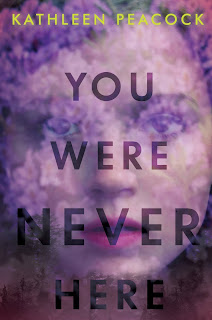Many people love to write. Many dream of becoming authors of some sort. Once you've taken up that dream yourself, and particularly if you've been published, you will find more and more people who confide in you - secretly or openly - their burning desire to write a book.
Most don't do more than dream of it. Most don't think to ask the hard questions or put in the long hours to chase after their dream. But if you've clicked on this post, you're different. You're one of those who is ready to embark on the challenging and rewarding path of a writer.
Recently I was interviewed by a student working on his senior paper. It was part of a larger project designed to help students map out their plans for the future. He wasn't really sure what he wanted to do with his life, maybe join the family trade of auto mechanicing. The one thing he was certain about was that he wanted to write. Preferably novels. He wanted to know the path I had taken and what suggestions I might have for him.
Later I realized this would be great info for the readers of this blog. Here's a recap of the highlights of what we discussed.
Education
While a formal creative writing education at a university or an MFA (
masters in fiction writing) program can be useful, neither are essential to becoming a successful writer. A different degree that offers other ways to support yourself and contribute to society can be just as meaningful, sometimes more. My degrees in Psychology and Health Education provide me with work opportunities as well as background knowledge that is useful in stories.
Most best-selling writers that I know also have a regular career, as a lawyer, a pharmacist, or a teacher, or a coach. Keeping your toes in two different worlds will enrich your writing and help support you financially. Having said that, learning about writing and all the trappings of a writing career is vital to your success.
Conferences and Workshops
One of the best ways to learn about enhancing your writing skills is through attending conferences and workshops. You will find classes at just about every skill level and opportunities to have your work critiqued. Classes typically focus on craft, marketing, platform, editing, publishing, and even inspiration.
Conferences were one of the first places I received objective positive feedback that confirmed I was making progress toward my goal of becoming an author. There are often contests available with financial rewards and sometimes even the possibility of feedback about your writing, which is even more valuable. For more info, check out this
Writing Conference Directory.
Inspiration
People often ask me what inspired me to become a writer. While each person's motivation and inspiration for choosing to write will be unique, there is a commonality between all writers I've known. It's the burning desire to write. I've loved writing since I was very young.
But my life took me other places for many years. It wasn't until I was pregnant with my 5th child that I realized I needed an outlet for myself that was completely separate from my identities associated with family and other work.
So I began writing again. The more I wrote, the more I wanted to write.
The reason I bring this is up is that it is never too early and never too late to begin the journey of a writer. For most writers, the passion for writing is what gets us started. It's a way to process life, filter our thoughts, manage our emotions, and maybe even escape the tedium (or horrors?) or every day life. The passion for writing may start us along the path, but commitment and consistency is what keeps us moving toward our goals.
As
W. Somerset Maugham has said, "I write only when inspiration strikes. Fortunately it strikes every morning at nine o'clock sharp."
There is a saying in writing circles: Butt in the chair. In other words, sit down and start writing, for goodness sakes. Inspiration may strike in between writing sessions. That's what notebooks are for. Otherwise, it's very useful to have a regular writing time and stick to it, even if it's only an hour at 5 in the morning.
Craft
One of the best ways to hone your craft is to read. Read, read, and read. Not just in your genre, either. You will learn more about writing and plotting as you study novels from a wide array of authors and genres.
The very best way to improve your craft is (drumroll please....) to WRITE. The more you write, the more you will improve, in sentence structure, imagery, characterization, plotting and more. Look at it as spending your 10,000 hours to become an expert. And who wouldn't want to spend 10,000 hours writing, right? Well, maybe somebody. But to a writer, that sounds like a dream come true.
Revision and Rejection
Okay, this is possibly one of the tough bumps along the road to becoming an author. You need to find people who will read and honestly critique your work. Preferably people who don't love you and feel an obligation to tell you how wonderful you are. How to find these people? We'll get to that in a minute.
But once you've found them, you need a really tough skin. You need to be able to take criticism and keep working. My husband told me, after about my millionth short story rejection, that I was a glutton for punishment. The thing is, you need to be persistent to reach any valuable goal. You also need to get your work out there and be prepared to be told it needs improvement. Be prepared to be rejected.
Networking
You can also connect with other writers at conferences and workshops. Both are useful places to form your own group with likeminded writers. It's useful to have a range of interests and genres represented in your writing group as well as a range of skills.
Your writing group can serve as a source of inspiration and also potential critique partners. You will also find you can refer each other to useful events and websites as well as get the word out about each other's work.
Platform
A writer's platform is their public persona. It includes their online presence on social media, a blog or website, and their contributions to other websites. It can also include classes they teach and speaking engagements. It is basically a springboard for extending the reach of the books and stories they write and engaging with readers.
If you do not have a blog or website, consider starting one now. Considering creating social media pages dedicated to your work as an author. Bring readers along with you on your writers journey.
Publishing
Finally, the fulfillment of your writing dream - publication. Actually, this is just another beginning. You'll now be doing
marketing and discovering that you want to publish yet more stories or books. But who wants fulfilled dreams, right? Isn't the chasing of the dream the whole point?
But, I get ahead of myself. There are two basic ways to publish a novel, self-publishing and traditional publishing. Did I say two? Well, there's hybrid now, too. Where a traditional publisher handles the print books and you retain control over digital publishing.
With self-publishing, you direct everything, from the writing of the book to the editing, title and cover creation, and the actual publication in print and digital form, usually through an online resource such as
amazon. Since you manage it all, the royalty payments are much higher than with traditional publishing. However, your ability to market and distribute your book may not compare to that of a traditional publisher.
To gain access to the big traditional publishers, you will need an
agent. Smaller, regional or niche publishers can be approached directly. Your costs will be lower if you go with traditional publishers, but you will also have less control over your final product and will receive much lower percentages for your royalty payments. However, this can all be offset by the marketing expertise of the publishers and the increased sales. It's up to you to
decide.
What have been some of your biggest hurdles for writing and some of your most rewarding experiences?
 Is this holiday a local celebration like the Grand Lake Pelican Festival? Particularly if you are writing a regional tale, including local festivities can add flavor to the novel. Researching them can also spark ideas.
Is this holiday a local celebration like the Grand Lake Pelican Festival? Particularly if you are writing a regional tale, including local festivities can add flavor to the novel. Researching them can also spark ideas. 

















































